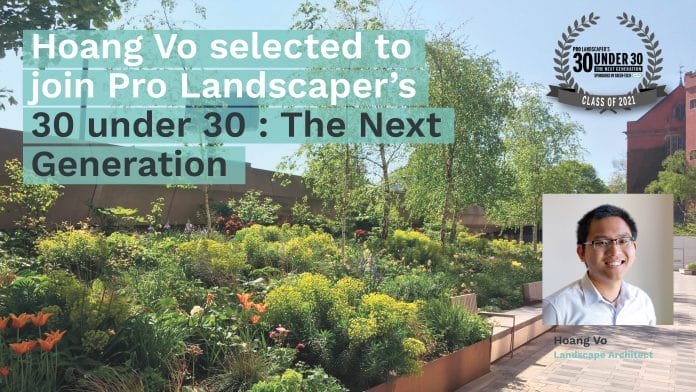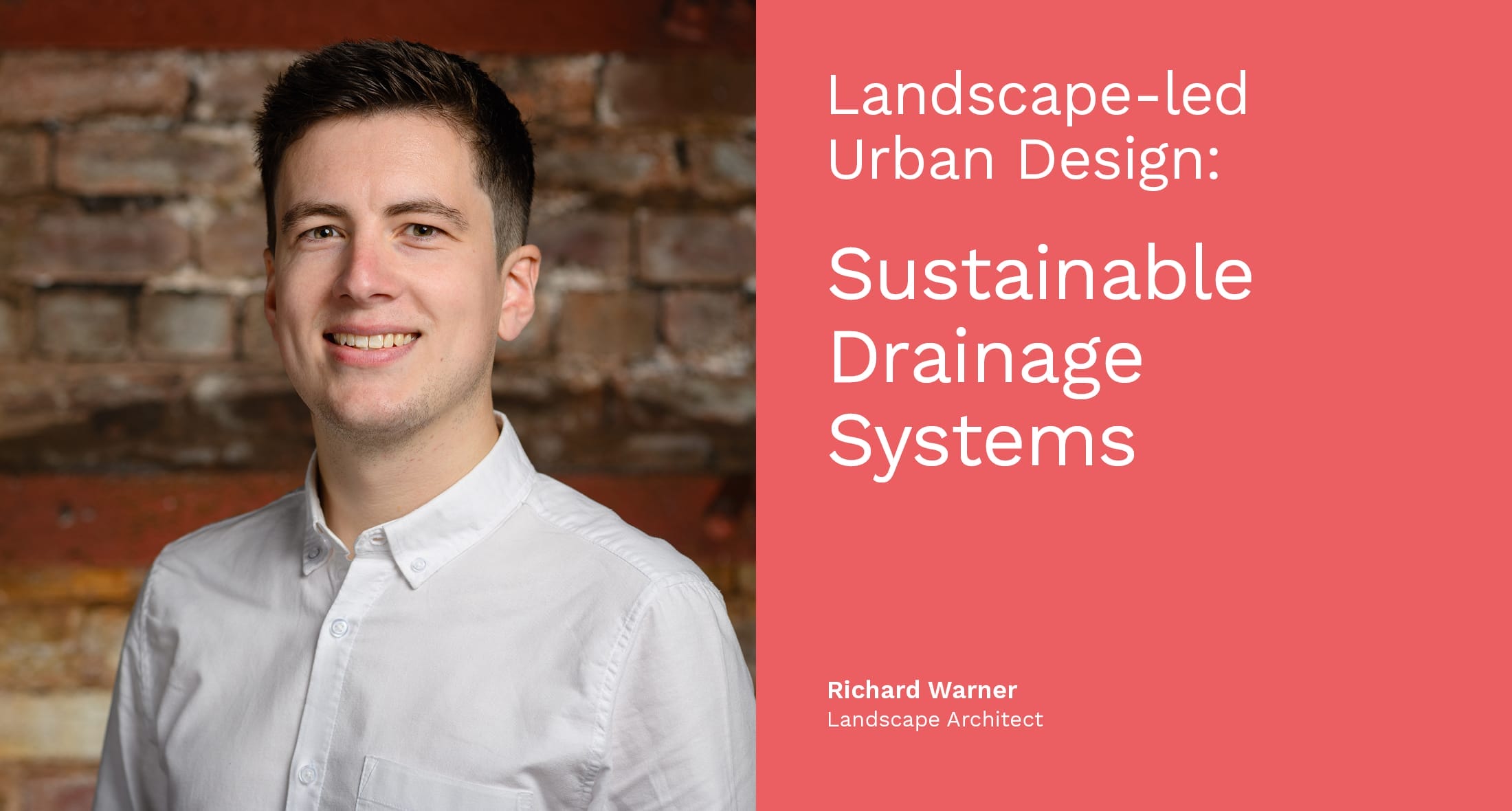
How do we optimise use and drainage of water in our landscape designs?
Richard Warner, Landscape Architect based in our Sheffield studio, discusses the benefits of Sustainable Drainage Systems (SuDS), using some of our project examples.
As Landscape Architects, we have an important role to play in surface water management and reducing the risk of flooding through the design and implementation of Sustainable Drainage Systems (SuDS).
SuDS can be integrated into new developments or retrofitted to existing developments, replicating natural water management with a combination of nature-based solutions to relieve pressure on rivers and sewers. As developed areas expand, the natural landscape is gradually lost to buildings, roads and other impermeable surfaces. This interruption of natural processes of rainwater interception, absorption and infiltration causes water to reach sewers and watercourses much quicker as the speed and volume of run-off increases, leading to increased and larger flood events.
The overarching principles of SuDS are simple: mimicking natural processes and managing surface water close to where it falls; using soft engineering to allow infiltration; conveyance and storage of water to slow run-off before it reaches sewers and watercourses. By slowing the flow of water, SuDS can effectively reduce flood risk locally and downstream.
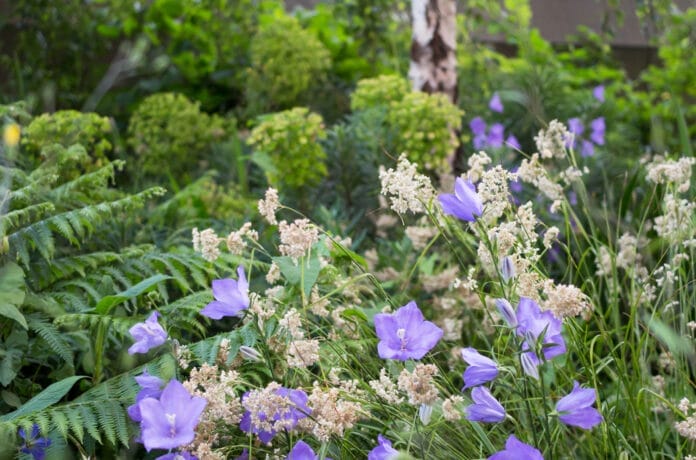
HLM champion a landscape-led approach to urban design and masterplanning, promoting SuDS from project inception. This ultimately leads to thoughtfully designed, well-coordinated schemes of multi-functional SuDS and greenspaces, benefitting natural systems and humans alike, while boosting habitat value and increasing biodiversity.
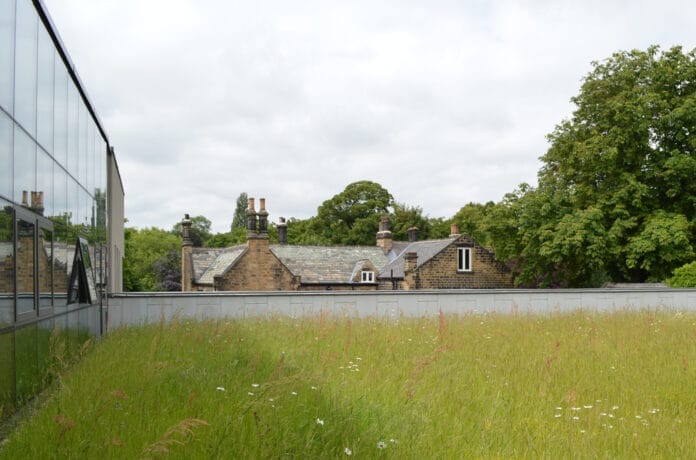
Sustainable drainage systems take variety of forms and can be broadly divided into four categories: infiltration, conveyance, storage and attenuation. Some of the key components include:
- Raingardens, green roofs and permeable surfacing to collect rainfall and reduce flow to the wider system.
- Planted swales to intercept and transfer water between components while allowing natural infiltration.
- Naturalistic detention basins and retention ponds to collect, store and filter rainwater.
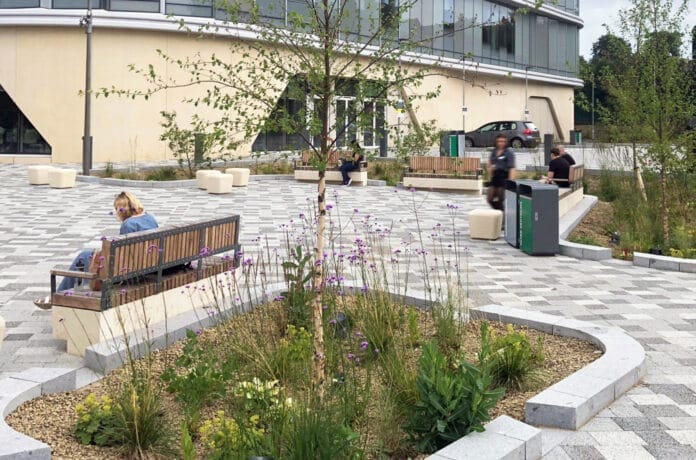
Our landscape design at The Wave delivered a series of SuDS components to deal with surface water drainage, while providing a lush, green landscape setting for university students and staff to enjoy. A collection of rain gardens and a permeable paved car park collect surface water, reducing run-off and controlling the flow of water to before it reaches below-ground attenuation tanks.
The positive impact of SuDS is well documented; they are becoming more widely accepted and implemented within new major developments and will soon be a mandatory requirement for most developments.
There are also significant opportunities to tackle the issue of surface water flooding with retrofitting of SuDS in existing developed areas, as well as the collective effect of small interventions at a domestic level.
The benefits of Sustainable Drainage Systems are much broader than reducing flood risk. On an environmental level, they enhance biodiversity and ecology, improve air quality, and reduce carbon. At a human scale, SuDS can transform the visual perception of an area and have a positive impact on health and wellbeing, providing access to high-quality public greenspace and offering recreational opportunities. They can also have an important role in education settings, providing practical learning opportunities in relation to the water cycle, ecology and biodiversity. Our landscape design at Carnival Place creates cohesion between residential development, public realm and community leisure facilities. An integrated SuDS scheme of rain gardens and swales creates a soft transition between private and public space.
The Living Street is HLM’s exemplar neighborhood design concept offering a solution to placemaking and community cohesion, with SuDS at the heart of the landscape, binding the street together with natural systems and positive human interaction. This outlines how we envisage the future of communities – cohesive, diverse and enhanced by thoughtful design. For more on our landscape schemes, visit our Landscape Architecture page, or get in touch using the link below.

Related posts
